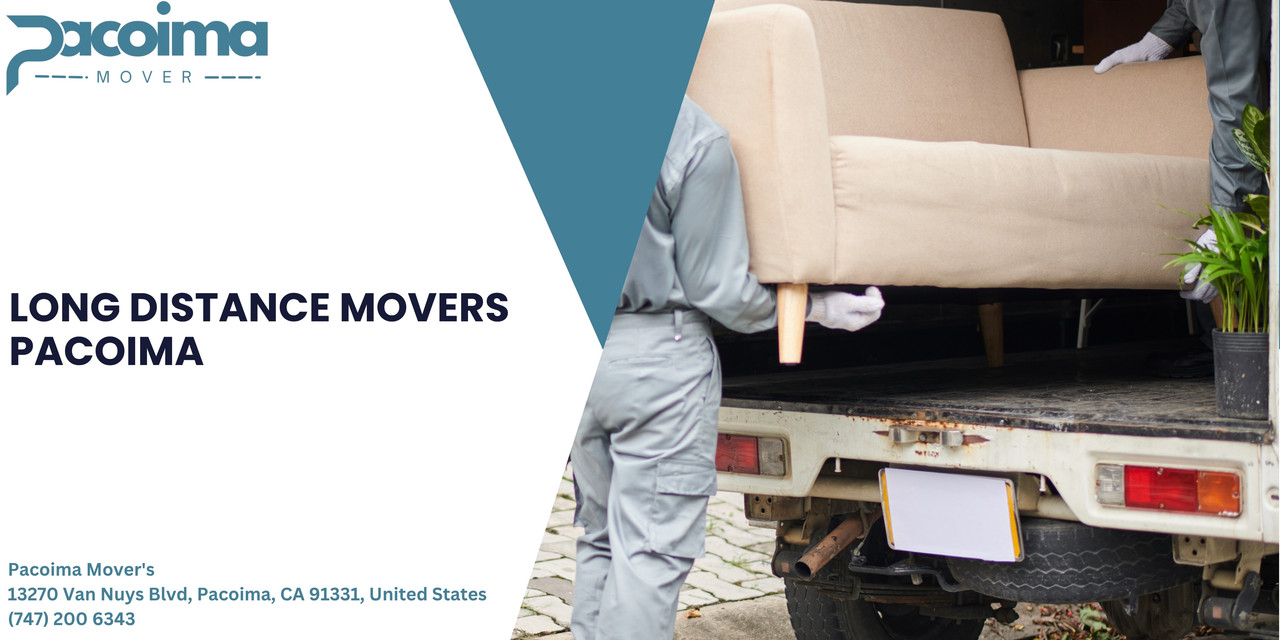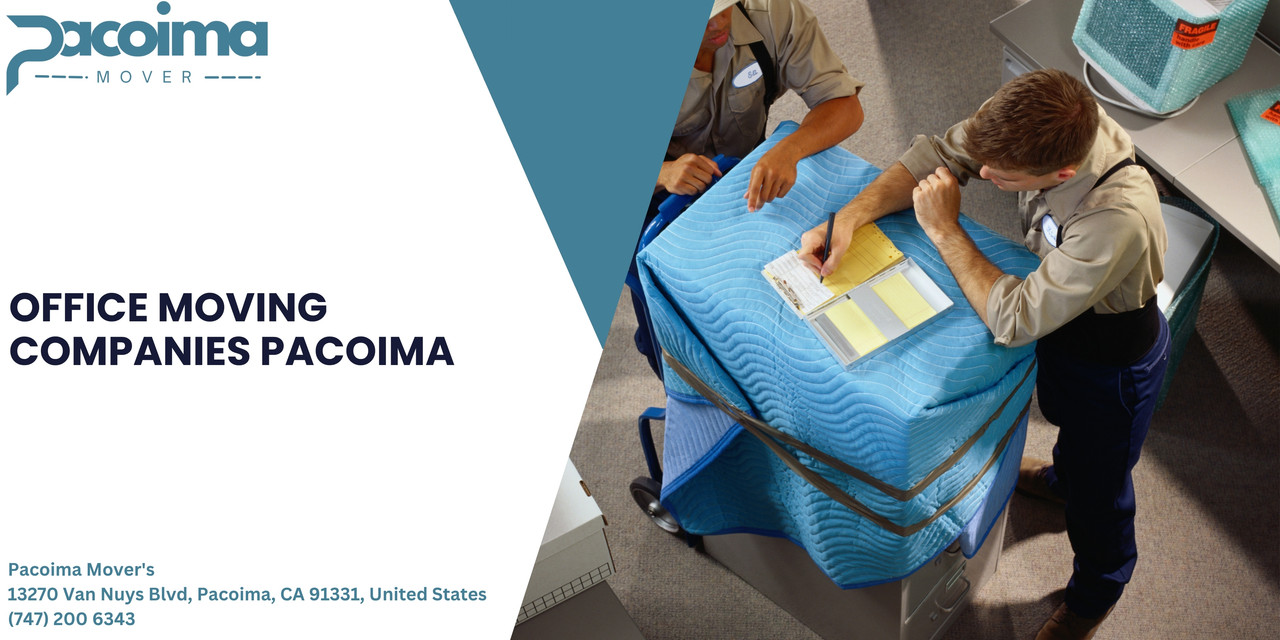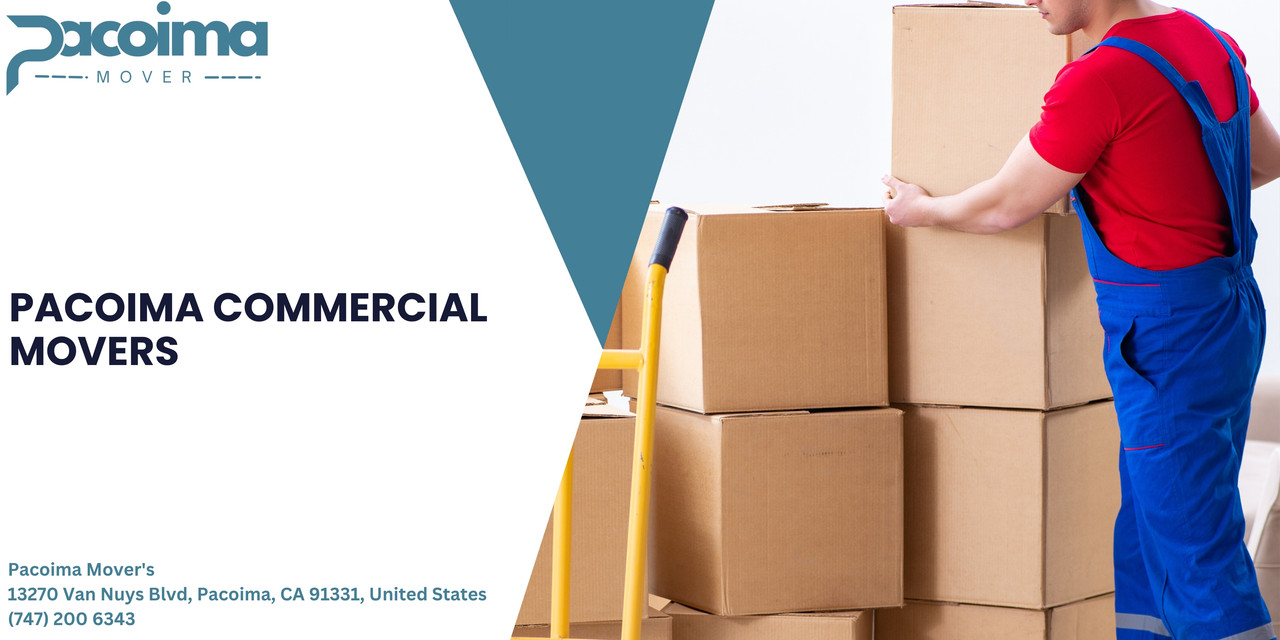Relocating a business in Pacoima looks simple on a calendar. Pick a date, hire a crew, move the boxes, flip the lights back on. The real work hides in the seams between those steps. If you get those seams wrong, you risk idle staff, data loss, customer churn, regulatory penalties, and a wrecked budget. I have walked through moves that cost a company two days of operations because a building certificate wasn’t ready, and I have seen a ten-hour move take twenty-six because a server rack didn’t fit a freight elevator. The difference between a smooth transfer and a costly mess lives in avoiding a handful of common mistakes.
This guide draws from on-the-ground experience with Pacoima commercial movers and the particular realities of the San Fernando Valley. Microclimates affect temperature-sensitive items. Older industrial parks hide low-clearance docks. Some landlords in Pacoima require union-only labor or specific insurance wording. Good planning handles these quirks. Poor planning learns the hard way.
Why details in Pacoima matter
Pacoima is a working neighborhood, thick with light manufacturing, automotive, food distribution, and service businesses. Streets like Van Nuys Boulevard see steady traffic, and certain blocks are tight for 53-foot trailers. Many buildings were retrofitted over decades, which means inconsistent elevator sizes, uneven floors, and electrical panels that need a certified shutdown. If you are moving a medical office, a printer with wide-format machines, or a wholesale operation with palletized stock, you cannot rely on generic advice. You need a plan that assumes real constraints: dock access, load limits, fire stairs that pinch a safe, and a landlord who wants a certificate of insurance before a single dolly touches the lobby.
I have found that companies that choose the right partners early, including reputable Pacoima commercial movers and the right specialty vendors, save at least 15 to 25 percent in hidden costs, mostly from avoiding delays. The following mistakes are the ones that trip businesses most often.
Mistake 1: Choosing movers on price alone
Everyone wants a sharp quote. The risk is equating “cheap” with “value.” When you search for Cheap movers Pacoima, you will see numbers that look appealing. Low hourly rates with vague scopes lead to aggressive change orders when the job starts. I once reviewed a quote that omitted rigging for a 1,400-pound cutter. The rate looked great until the business saw a same-day surcharge for a crane and two riggers. That invoice wiped out any savings.
Price should include the crew count, truck sizes, equipment list, handling of IT and specialty items, packing materials, stair or elevator charges, and any overtime or weekend premiums. Serious Office moving companies Pacoima build their quotes with site visits and detailed inventories. They ask about your dock, your MEP shutdowns, and your building rules. If a mover doesn’t ask questions, that is your first red flag.
The better question than “who is cheapest” is “who will stand behind a not-to-exceed number with a clear scope.” For large moves, negotiate a blended day rate with defined deliverables. If the mover says they cannot estimate without charging for a survey, that can still be a good sign. Professionals invest time in scoping complex work.
Mistake 2: Waiting too long to engage IT and telecom
The mover can place the desks and boxes. They cannot fix your switch stack at 1 a.m. because the ISP never lit the circuit. Lead times for internet in Pacoima range from a few days for cable to several weeks for fiber, depending on the building pull. Phone porting windows are rigid. A software company I worked with lost a full business day because their PRI numbers didn’t port until 3 p.m. They had beautiful furniture at the new space, and zero inbound calls.
Loop in IT as soon as the new address is real. Lock down ISP order numbers, demarc locations, and power. If you host your own servers, schedule the migration with staggered workloads and a back-out plan. If you run cloud-first, confirm power and Wi-Fi coverage with heat maps. Label every cable at the old site before disconnect, and photo-document racks. Verify static IPs, DNS changes, VPN tunnels, and MFA prompts before you pull the plugs.
A trick that saves sanity: keep one rack or at least a key service live at the old site until critical services pass testing in the new space. An overlap of 24 to 48 hours costs a little rent, and it has rescued more than one cutover.
Mistake 3: Ignoring building rules, insurance, and union requirements
Every building has its own playbook. Some require after-hours moves only. Others need elevator padding and a building engineer on site. Several Pacoima industrial sites ask for specific insurance endorsements: primary and non-contributory language, waiver of subrogation, and higher General Liability limits. If your mover can’t produce a certificate of insurance on the landlord’s form, security may stop the job at the dock.
I keep a checklist for property requirements because the cost of missing one detail is a stalled crew. Confirm these items at least two weeks prior to move day:
- Certificates of insurance with exact language, including additional insured names and waiver of subrogation if required. Freight elevator reservations, load limits, and hours. If there is no freight, confirm padded passenger access and building escort rules.
Missing this prep creates expensive idle time. A crew of eight at $65 to $95 per mover per hour becomes a four-figure loss by lunchtime, and your schedule is now toast.
Mistake 4: Underestimating packing and labeling
Most delays come from poorly labeled items and last-minute packing. When a pallet of mixed boxes lands on a new floor without clear zones, movers start guessing. A countertop POS ends up in Accounting, a safe sits in a hallway, and people show up to chaos.
Color-coded zone labels cut through the noise. Assign a color to each department or room, map the new floor with the same colors, and slap labels on all sides of boxes and furniture. Number critical items, like servers or lab equipment, and marry those numbers to photos in a shared folder. For loose items, pack tight and pad wisely. Oddly shaped items are the first to get dings and the last to find a home.
If your team is too busy to pack well, pay for professional packing. Yes, it costs more up front. No, you won’t regret it when your inventory, files, and equipment arrive sorted and intact. If you use Cheap movers Pacoima for budget reasons, at least supply proper materials and detailed instructions. The cheapest mistake is the one you never let happen.
Mistake 5: Treating sensitive equipment like furniture
Commercial moves often include printers, CNC components, medical devices, server racks, and refrigerators with sensitive compressors. These are not just heavy objects. They have center-of-gravity quirks, shock limits, and power-down sequences. An MRI coil or a wide-format printer can exceed $50,000 in replacement cost, not to mention the lost revenue from downtime.
Insist on a plan for each sensitive item. That plan should call out the manufacturer’s transport guidelines, the required equipment such as air-ride trucks, lift gates, stair climbers, and rigging straps, and the people authorized to disconnect and reconnect. For servers and storage, document drive arrays, note firmware, and confirm that backups are verified and recent. If the mover says “we’ve done these before” without specifics, push for detail.
One local caution: some streets in Pacoima shake more due to road condition. Air-ride trucks help, but careful packing and shock-absorbing materials matter just as much.
Mistake 6: Forgetting change management with staff and customers
Moves disrupt people more than things. If staff do not know where to park, where to sit, or how to enter the building on day one, you lose momentum. If customers don’t know about a temporary service gap or a new address, you burn goodwill.
Start internal communications early. Share a simple timeline, what to expect on the final week, and who to contact for issues. Assign a move captain in each department. Give them authority to make small decisions. Draft a brief for customers and vendors with your new address, effective date, any service changes, and a fallback contact. Update your Google Business Profile, website, invoices, and email signatures in the same window. If your business relies on foot traffic, consider two weeks of parallel signage.
On day one at the new site, have a welcome station with floor maps, temporary name cards, a small kit of tools and supplies, and a person who can say yes quickly. The few hundred dollars you spend here saves hours of confusion.
Mistake 7: Neglecting permits, parking, and access
A move plan that ignores curb space in Pacoima risks tickets, angry neighbors, or worse, no place to stage. Some city blocks require temporary no-parking permits for trucks. Industrial blocks can be easier, but inside tight yards, a trailer can trap cars or block forklift lanes.
Scout both old and new sites with your mover. Time it for the same day and hour you plan to move. Note traffic patterns, bus lanes, fire hydrants, low branches, and any overhead lines. Secure any necessary permits through the city, which can take several business days. If you operate forklifts or need pallet jacks inside, confirm floor ratings and ramp access. Do not assume the dock plate fits, and check door widths against your largest pieces.

I once watched a team lose two hours because an 84-inch conference table was 85 inches wide with its base. The freight elevator door was 83. We had to remove the base, rewrap, and reassemble.
Mistake 8: Underinsuring or misunderstanding liability
Commercial movers carry insurance, but coverage shapes vary. Released value coverage of 60 cents per pound is not coverage in any meaningful sense for high-value gear. A 200-pound server worth $12,000 would yield $120 under released value. That is a bad day.
Before you sign, read the mover’s coverage options. Ask for actual certificates from their insurer, not just a proposal. Consider declared value or a separate inland marine policy for high-value items. Clarify what the mover excludes, like self-packed boxes, concealed damage, or certain electronics. If you use a low-bidder from a list of Long distance movers Pacoima to move a high-value lab across state lines, spend extra time on valuation. Interstate rules differ from local moves, and you want documentation that stands up if something breaks.

Mistake 9: Scheduling all tasks on one critical path
In complex moves, too many tasks depend on one event. Electrician signs off on power, then the ISP installs, then the IT team configures, then the movers place racks, then staff tests systems. If one step slips, the rest tumble.
Build slack into your plan. Stagger tasks so that furniture install and low-voltage work can run in parallel when practical. Separate a pilot area for IT to test voice and data before the full cutover. If your business can handle phased moves, split departments across two windows. Many Office moving companies Pacoima prefer phased work anyway, because it lets them allocate the right specialists on the right day. If you must do a same-day cutover, have contingency power strips, extra patch cords, a spare switch, and a mobile hotspot ready.
Mistake 10: Skipping a post-move punch and decommission plan
Everyone breathes out when the last box comes off the truck. That is exactly when small issues hide and old sites get forgotten. Landlords want vacant, broom-clean spaces with patch and paint done. Old cabling might need to be removed to meet lease terms. If you do not manage this, deposits disappear.
Schedule a post-move punch walk within 24 hours. Bring the move captain, the mover’s lead, IT, and someone from facilities. Verify that priority items are in place, that equipment is level and powered, and that trash is removed. Create a short list with owners and due dates for anything incomplete. Back at the old site, plan a decommission day with e-waste pickup, certified data destruction if needed, and final cleaning. If you used floor protection, rip it up after the last cart rolls out, not the next day when the adhesive has set.
Good movers include a punch process in their scope. If they don’t, add it yourself. A tight finish protects your deposit and your sanity.
What to look for in Pacoima commercial movers
It helps to know what good looks like when you vet vendors. Pacoima commercial movers who perform well tend to share a few traits. They ask for a site visit, then produce a written scope with line items and a realistic schedule. They bring references, ideally in your industry. They own or can source specialty equipment, such as panel carts, library carts, server skids, and safe jacks. They can articulate how they handle sensitive items, chain of custody for files, and after-hours work. They provide their own floor and wall protection, and they talk openly about building rules and certificates.

If your move has a long haul component, the segment of Long distance movers Pacoima with true interstate authority will have USDOT and MC numbers you can verify. They will explain weight tickets, inventory protocols, and delivery windows. For local moves, look for a team that understands the street realities in the Valley. They should know which buildings at your destination are strict, where to stage trucks, and what time to avoid the worst traffic.
A final word about cost: value comes from transparency. A mover who shows you the math earns trust. One who hides behind a low hourly rate but withholds scope will cost more in the end.
Planning cadence that works in practice
I have found a simple cadence that scales from small offices to mid-size warehouses. It avoids overplanning while keeping the critical pieces aligned.
Eight to twelve weeks out, define the move window, assign internal leads, and select your mover. Book the site survey and lock the initial scope. IT orders internet and phones, and facilities gathers building requirements.
Four to six weeks out, approve seating plans and circulation diagrams. Color-code zones, order packing supplies, and start nonessential packing. Secure insurance certificates and elevator reservations. Confirm permits and truck staging plans.
Two weeks out, walk both sites with the mover. Validate access, measure doorways, confirm dock heights. IT validates circuit turn-up dates and schedules the cutover. Communicate final instructions to staff and customers.
Move week, break down noncritical gear first. Pull servers or other sensitive equipment with proper backups and verification. Use load manifests, not memory. During the move, a single decision-maker stays with the crew. At the new site, stage by color zone, test core systems, and only then release staff to unpack.
Day one and two, run the punch list. Catch small issues before they grow. Decommission the old site, return keys and access cards, capture final meter readings, and take timestamped photos of the vacancy condition.
This cadence reduces surprises. It is not fancy. It works.
A brief note on culture and morale
Moves can energize a team if you give them a stake. Invite input on simple choices: coffee station location, a few paint accents, or quiet zones. Provide snacks on pack days and the first day in the new space. Allow for a couple of hours of reduced productivity without guilt. Small gestures matter when you are asking people to uproot their routines.
If change fatigue is already high, tell people why the move helps them: better parking, shorter commute for many, nicer restrooms, more natural light, or upgraded HVAC. Not fluff, just facts that connect the disruption to a benefit.
Edge cases worth anticipating
There are always oddities. Freezers used by food businesses need dry ice and careful timing. Hazardous materials require permits and specialized carriers. Medical records demand chain-of-custody logs. If your business leases equipment, like copiers, check transfer clauses to avoid fees. If you operate on thin margins with just-in-time inventory, build a temporary buffer so a delay does not stop production.
Another edge case in Pacoima: heat. Summer days in the Valley can push interior temps high if HVAC isn’t yet commissioned. Schedule sensitive moves early morning or late evening, and avoid storing heat-sensitive stock in trucks on asphalt for long stretches. For long-distance hauls, ask carriers about temperature exposure and rest stops. Reputable Long distance movers Pacoima will address this without hand-waving.
When to DIY and when to hire
A small consultancy with ten desks and no servers can handle a lot of packing on their own, then bring in a crew for the heavy lifting. A manufacturer with mezzanine stock, racking, and forklifts should not. As a rough rule, if any single item requires more than two people to move safely, or if specialty tools come into play, hire pros. If your new landlord is strict, or if your equipment is mission-critical and high value, hire pros. The liability alone justifies it.
That said, even with professionals, keep ownership of the plan. Approve the labeling scheme, the sequence of areas, and the day-of contact tree. The mover brings muscle and a process. You bring context.
Final thoughts that save money and stress
Commercial moves test coordination under pressure. The best investment is in the front-end plan and the right partners. When you evaluate Office moving companies Pacoima, look past marketing gloss. Ask about specific experience with your building type and your equipment. Get everything in writing, including a punch process and decommission. Treat IT as a parallel Pacoima Mover's project, not a line item. Control the curb, the elevator, and the calendar, and half the battle is won.
The mistakes listed here are common because they are easy to make. Price looks simpler than value. Packing looks like a task anyone can do. Building rules feel negotiable until security locks the dock. Each of these has a fix that is straightforward once you see it.
Contact Us:
Pacoima Mover's
13270 Van Nuys Blvd, Pacoima, CA 91331, United States
Phone: (747) 200 6343